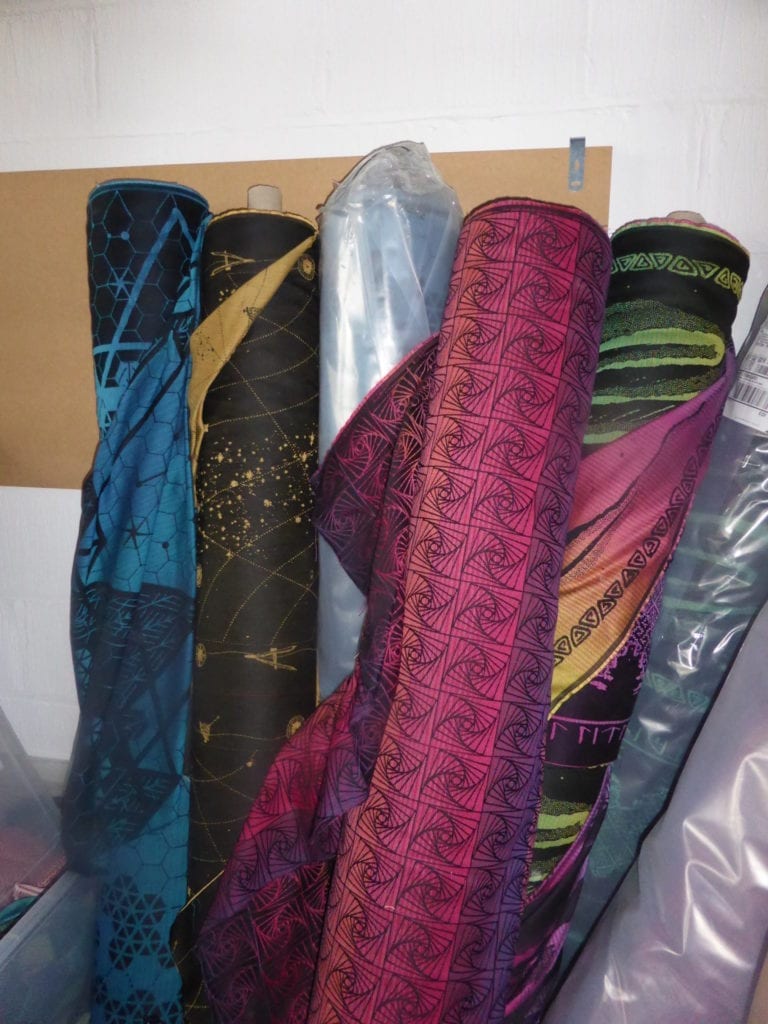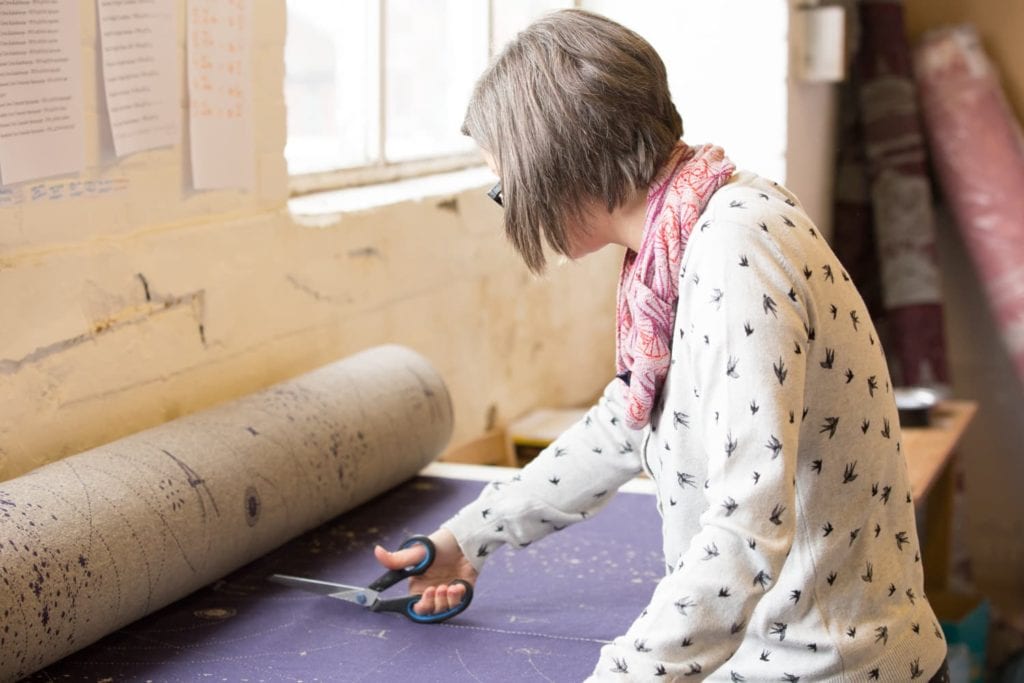Design, production & geekery
Unhemmed Wrap Cloth FAQs
Here’s some helpful information about our woven wrap cloth!
Basic information about the cloth
- Wrap cloth is woven double width on the loom, then split down the middle to form 2 identical wraps.
- full width unhemmed wrap cloth will have one selvedge edge (which won’t fray) and 3 raw cut edges. The selvedge will either be along the top or bottom of the design depending on which half of the fabric you receive.
- The unhemmed cloth will be wider than a standard wrap because the rolled hems take up width. Your cloth will be at least 70-75cm wide depending on the fibre blend and weave (Wool cloth will usually be narrower than all cotton). The design may not run all the way to the very edge of the cloth.
- The cloth you receive will be unwashed and still in loom state.
- We sell cloth in multiples of 50cm (19.7 inches). If you order a longer length you’ll receive a single continuous piece
- Your cloth will be cut from the main roll, so we can’t guarantee which part of the design you’ll get on your piece.
Design lengths
Each design has a different length repeat. We’ve listed how long each design is so that you know how much cloth you’d need to order to make sure that you get the full design.
Winter Hill: 103cm (40.5 inches)
Murmuration: 83cm (32.7 inches)
Microcosm: 105cm (41.3 inches)
Nocturne: 163cm (64.2 inches)
Birch Trees: 144cm (56.7 inches)
Seafoam: 113cm (44.5 inches)
Charters Moss: 120cm (47.2 inches)
Geode: 120cm (47.2 inches)
Midwinter: 64cm (25.2 inches)
Harvest: 64cm (25.2 inches)
Starmap: 78cm (30.7inches)
Gossamer: small repeat
Kaleidoscope: small repeat
Festival: small repeat
Tourbillon: small repeat
Tentacular Spectacular: small repeat
Curves of Pursuit: small repeat

Sewing with wrap cloth
- Secure the edges. Wrap cloth is looser than furnishing or tailoring fabric. You need to fix the raw edges before you can wash the cloth. The selvedge is secure, but the 3 cut edges need to either overlocked(serged) if you have an overlocking machine, or simply stitched with a zigzag or running stitch.
- Wash the cloth. All new cloth will contract and ‘settle’ after the first wash, so prewashing is important to make sure that your finished item doesn’t shrink! A wash will also remove any dust from the weaving process. Once you’ve washed and pressed the cloth it will be ready to work with.
- Increase your seam allowance. Giving yourself a more generous seam allowance than you normally would will help to make sure that your hems are nice and secure. If you’re overlocking each cut piece that you cut then you can get away with less extra seam allowance.
- Check your measurements. Before you cut, make sure that your cloth isn’t being pulled too tight and that the warp and weft yarns are at right angles to each other
- Work with the bias. Wrap cloth has a lot of diagonal stretch to it, so you want to make sure that your cut pieces don’t become misshapen as you stitch them. When you stitch on the bias, make sure to be sewing in the direction that contracts the cloth rather than elongates it. This will prevent your stitching from stretching your cloth out of shape.
Here are some ideas for wrap cloth sewing projects!
